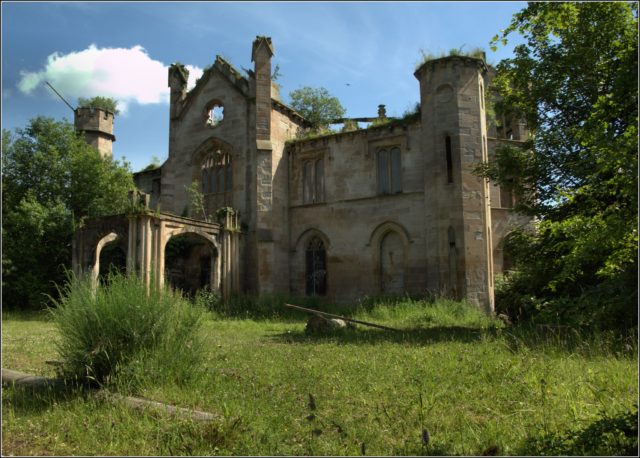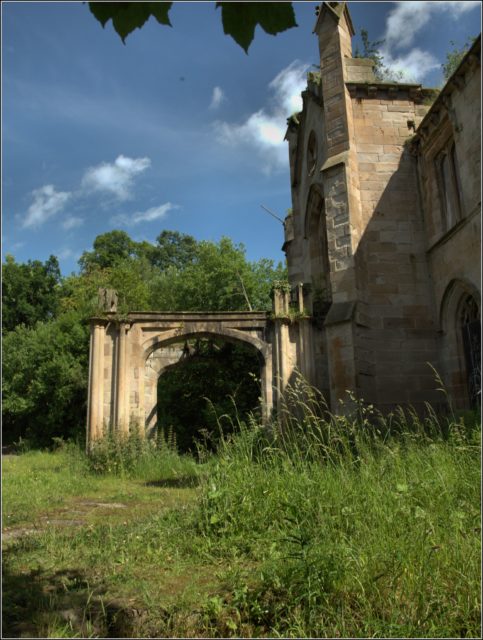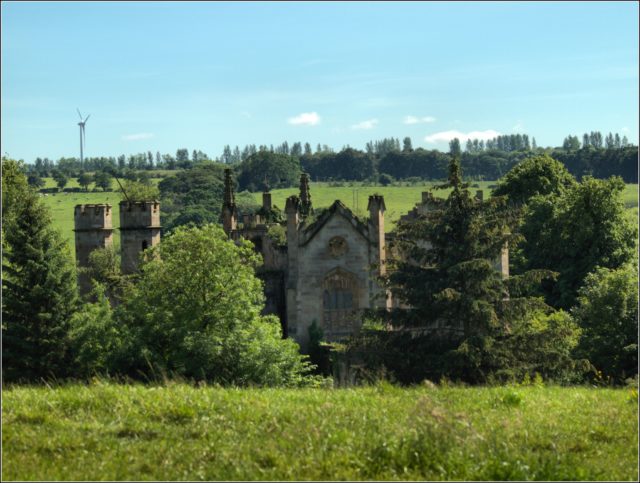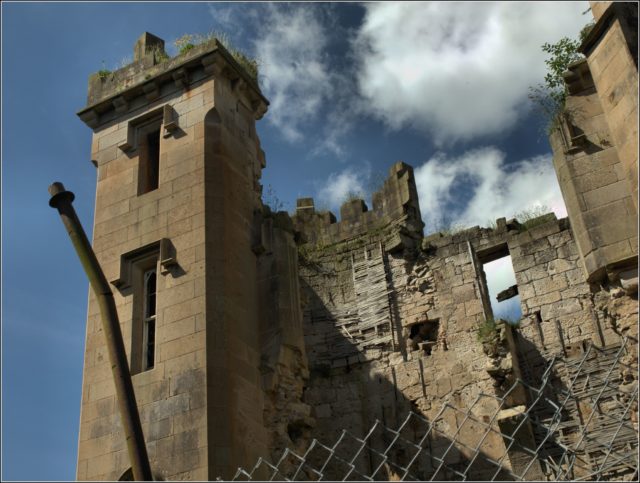Cambusnethan Priory, situated in the village of Overton, North Lanarkshire, Scotland, stands as a remarkable exemplar of quasi-ecclesiastical Neo-Gothic architecture in the region. Presently, all that remains of the Priory are the remnants of a two-story rectangular house, featuring a deep basement. Notably, the Scottish Civic Trust has designated this historic structure as “At Risk.”
Despite its monastic moniker, Cambusnethan Priory was never intended as a dwelling for monks or nuns; rather, it served as a residential home for the Lockhart family. Designed by the renowned architect James Gillespie Graham, construction of this architectural gem concluded in the year 1820.
Prior to the advent of Cambusnethan Priory, the location had housed a Norman tower and subsequently a manor house, which regrettably succumbed to a fire in March 1816. The mansion, a stunning edifice constructed from yellow ashlar sandstone, featured ornate details such as turrets, chimneys, cornices, and castellated rooflines. Adorned with octagonal corner towers and a central entrance with gates, the Tudor convent-style house boasted pointed arched windows on the first floor and rectangular ones on the second. The Lockhart family’s coat of arms, bearing a casket, heart, and lock, was elegantly carved above the main entrance and on every balustrade of the main staircase.

During the Lockhart family’s residency, they cultivated magnificent gardens on the grounds, which, sadly, no longer grace the landscape today. Regrettably, little is known about the period when the mansion served as their family home. In the early 1960s, Cambusnethan Priory was leased as office space to architects who were engaged in various projects in Livingston, Scotland. In 1967, the mansion faced impending demolition, but it was fortunately spared when Ronald Wilson acquired the property. Wilson sought and obtained permission to convert Cambusnethan Priory into a restaurant and hotel.
In the 1970s, the establishment gained notoriety for its banquet hall, where mock medieval-style banquets were hosted. The banquet hall was stripped back to its bare stone walls to imbue an authentic atmosphere. In February 1980, the property was put up for sale at a price of £300,000, following recent renovations to facilitate its dual role as a hotel. Around this time, certain ornate pinnacles had to be removed for safety concerns.

The property remained unsold, leading to the removal of lead and piping from the interior. In 1984, Motherwell County Council issued a Repair Notice, resulting in the property being boarded up. A proposed sale to the Red Dragon Hotel Group fell through, causing the plans to transform Cambusnethan Priory and its surroundings into a chalet complex to be abandoned. The boarded-up, derelict condition of the Priory made it susceptible to vandalism. A fire in 1985 underscored the risk of structural failure without repairs and renovations.
In 1986, William Welch took ownership of the property and secured approval for a project to convert the building into 12 residential apartments, with plans for an additional 24 apartments in the surrounding grounds, estimated to cost around £1 million. Unfortunately, little progress was made, and by 1990, a structural inspection revealed severe cracks in the walls and a collapsed roof. Subsequently, the owner sought a partner to complete the apartment project. In the summer, the District Council mandated the demolition of part of the southwest tower.

By 1992, the building permit had lapsed, and the owner submitted a new project valued at £2 million. However, the Dalzell Heritage Trust raised objections to the specific plans, albeit supporting the broader goal of enhancing and restoring the property. Over the years, numerous plans and projects were presented but failed to gain approval. In 1995, another fire damaged the building, leading to the outer wall’s collapse and further structural deterioration.
In the ensuing decades, various renovation proposals encountered opposition from different organizations, resulting in further decay for Cambusnethan Priory. Most of the window frames deteriorated, and the roof vanished entirely by 1998. Vegetation overtook much of the structure, with some walls collapsing or bearing graffiti marks. In March 2014, the “Friends of Cambusnethan Priory” was established by local residents in an effort to raise funds and prevent further deterioration. Notably, they recently organized a photo competition to include pictures in their 2021 calendar.

